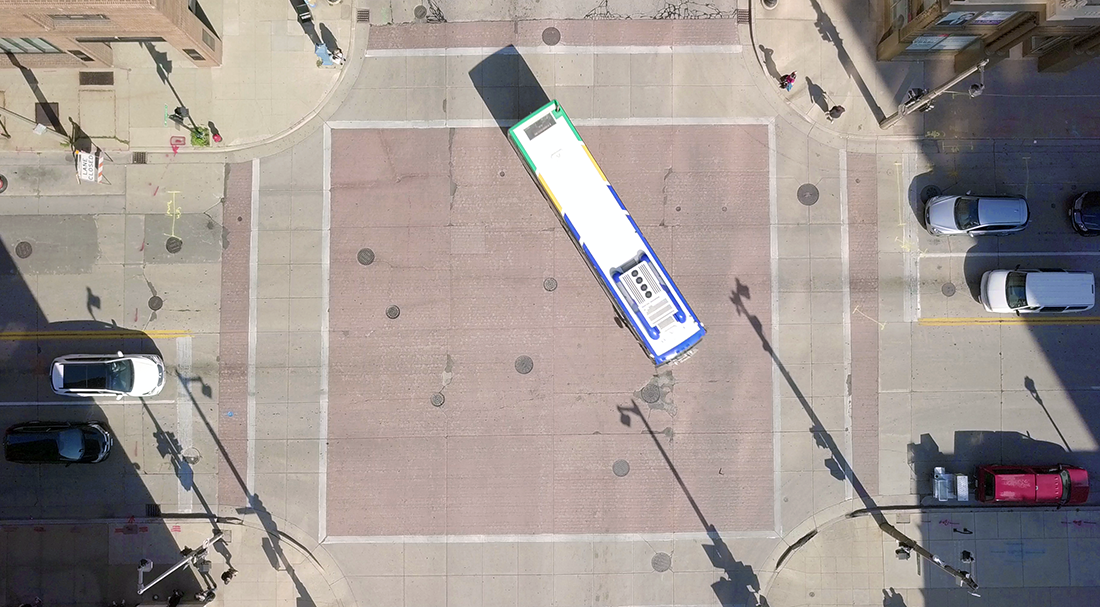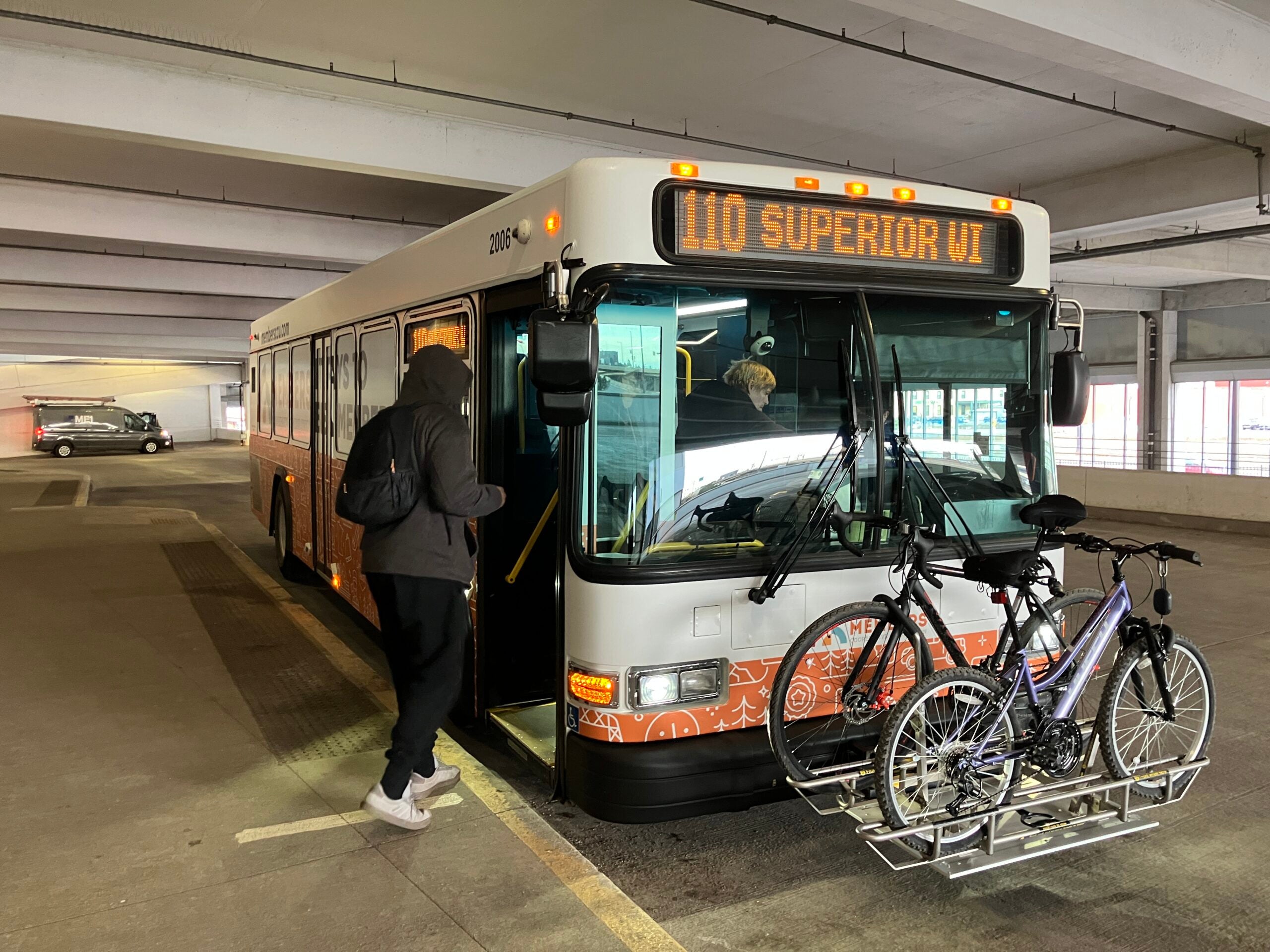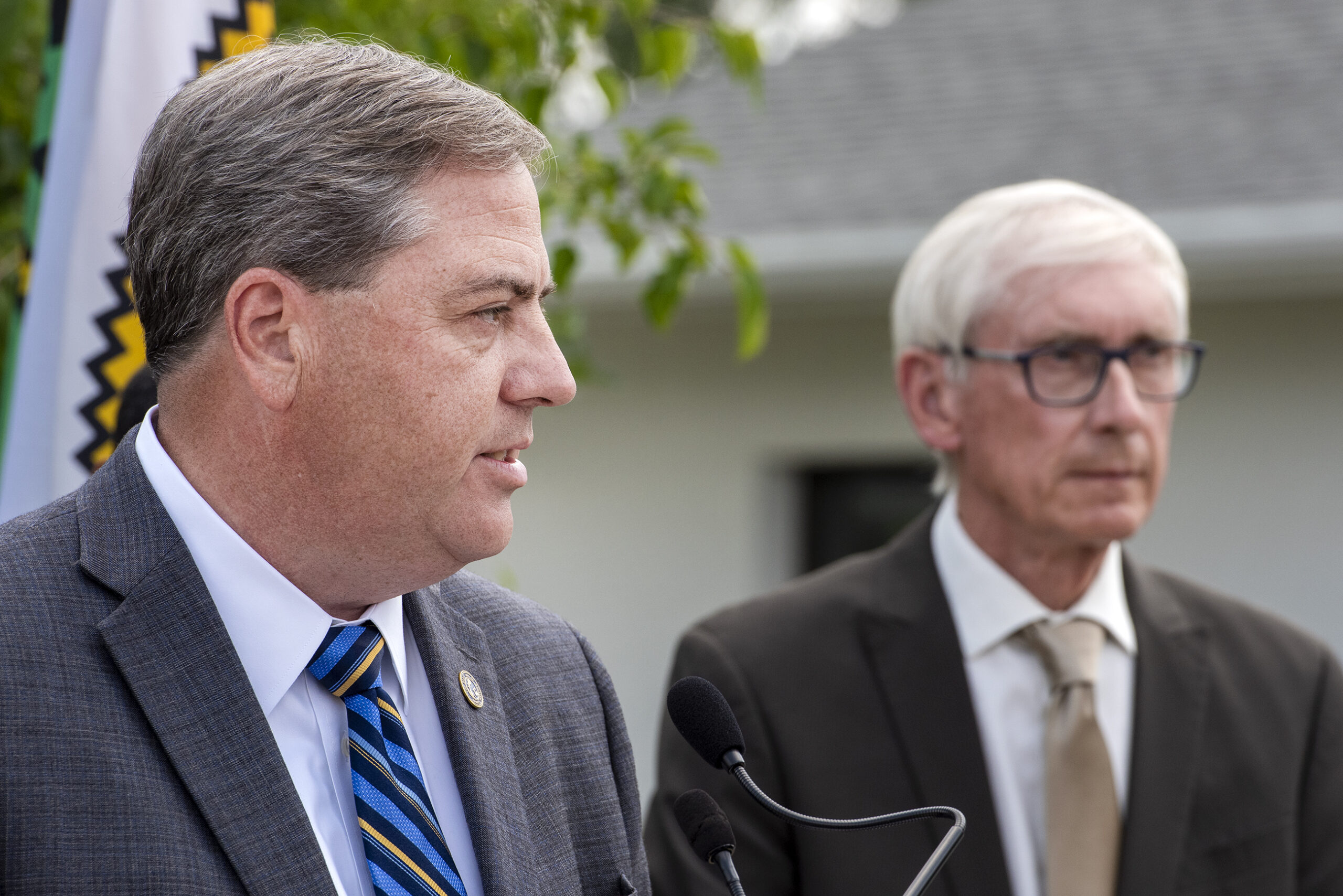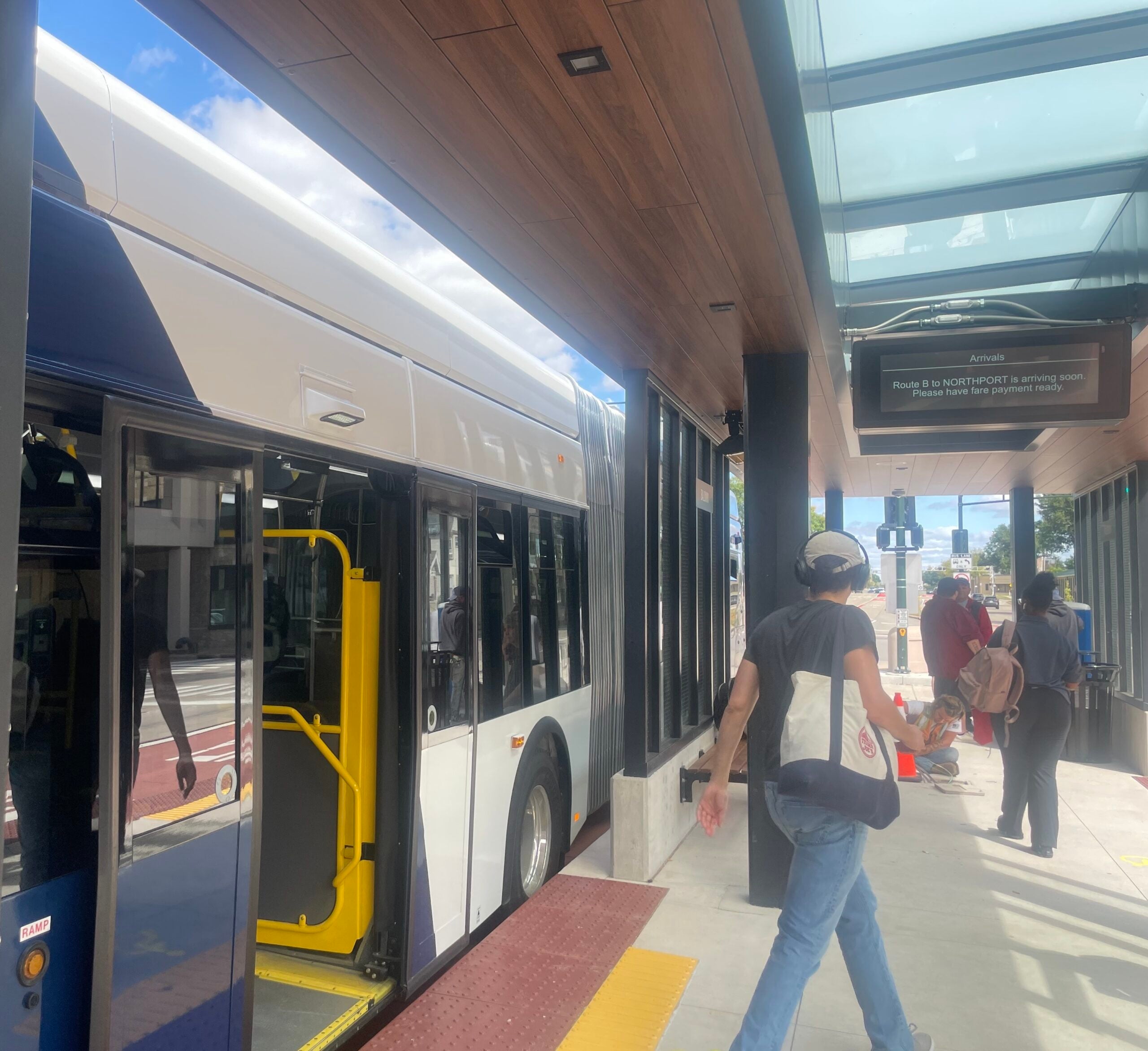Potential budget cuts to Milwaukee County’s bus system could mean thousands of riders across the state’s largest county would lose service.
A recent report from the Wisconsin Policy Forum found the Milwaukee County Transit System, or MCTS, could see a budget deficit of nearly $26 million in 2025 and a deficit of more than $40 million by 2028. That’s largely due to ridership declines, fiscal constraints and the end of federal COVID-19 pandemic relief aid.
Just a 20 percent cut in the system’s operating budget would mean 74,000 commuters across the county would lose access to the service, according to MCTS. Denise Wandke, president of the transit system, said they’ve already had to make several route cuts in recent years.
Stay informed on the latest news
Sign up for WPR’s email newsletter.
“It is the reality. It is doomsday. We are at the point where … we have been making these cuts, little by little, which has affected our ridership,” Wandke said during a Milwaukee Public Transportation Review Board meeting Wednesday.
Future route cuts could also have dire consequences for low-income residents living in the county, the report found. A 2020 study found that in urban areas, 21 percent of low-income households don’t own a vehicle.
“There’s no way that a county of this size can be without some public transportation,” Wandke said. “I mean that would be the worst thing that could possibly happen for Milwaukee County.”
Milwaukee County Transit has received nearly $191 million in American Rescue Plan Act funds since 2020. But those funds will run out at the end of 2024, creating a “sizable hole” in the bus system’s budget. Rob Henken, president of Wisconsin Policy Forum, said it’s a huge issue they’ll need to address.
“This $191 million dollars has been a lifeblood that has allowed MCTS, for the most part, to avoid severe service cuts,” Henken said. “Where the huge challenge comes is that ostensibly, at the end of 2024, going into 2025, when those special federal dollars are exhausted.”
Milwaukee County officials are already dealing with a looming fiscal cliff in their budget. While presenting the county’s budget last year, Milwaukee County Executive David Crowley warned that Milwaukee County won’t have enough money to fund essential services like public safety, parks, bus routes and emergency services.
Henken said bus ridership tends to go up or down, depending on what’s happening with the economy. But some of the least productive routes are still badly needed to let residents get to jobs. He added that cutting service would also lead to a loss in revenue for MCTS.
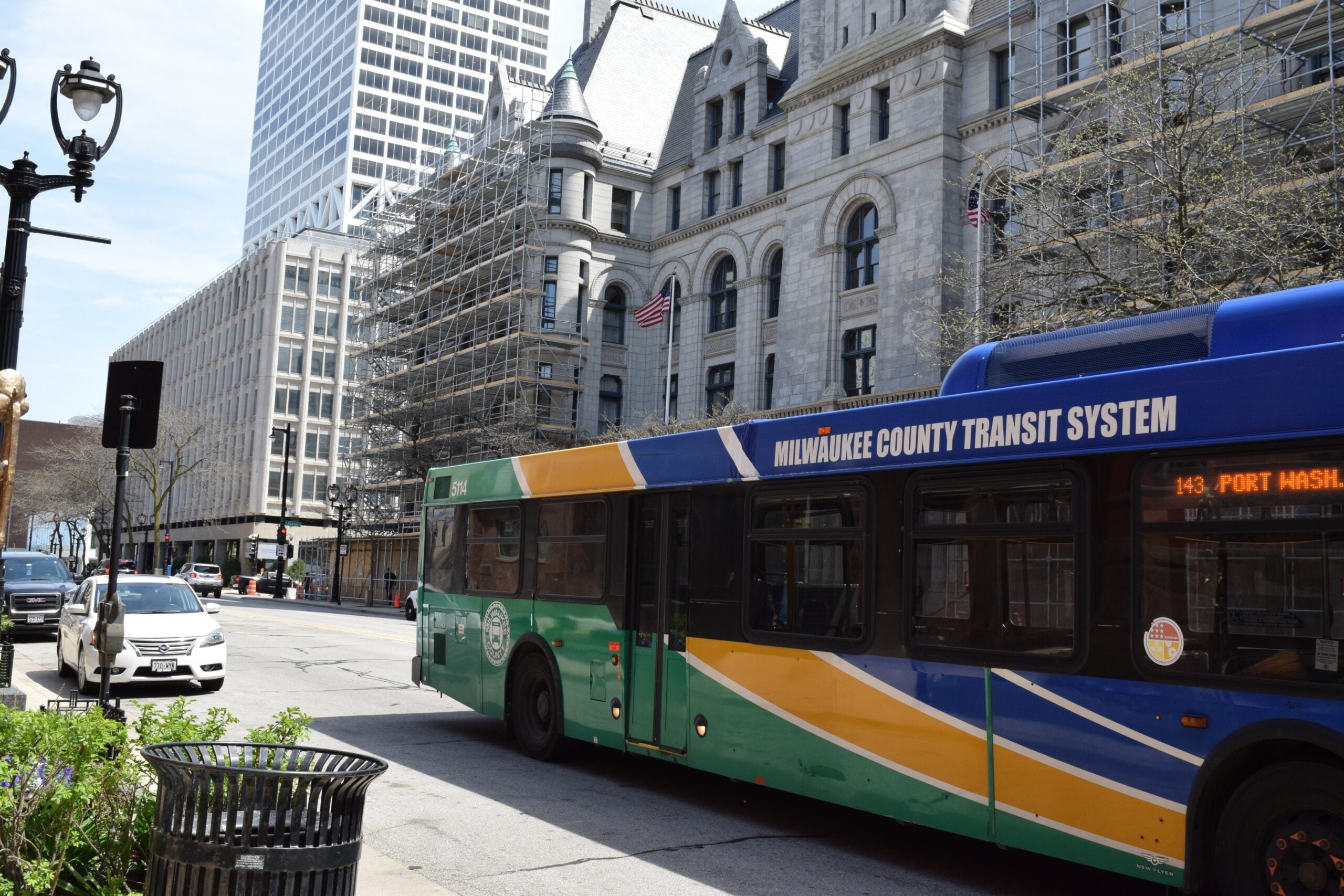
Milwaukee transit sees decade-long decline in bus ridership
From 2010 to 2019, passenger trips on Milwaukee County bus routes fell by 31 percent, meaning farebox revenues also declined. The COVID-19 pandemic didn’t help those numbers.
An April 2022 report by the Wisconsin Policy Forum found that bus ridership was down about 50 percent across Milwaukee County. The same went for cities like Appleton, Eau Claire, Green Bay, Kenosha, Madison, Oshkosh, Racine and Waukesha. In 2019, Wisconsin residents rode on those transit systems 48.5 million times, according to the report. In 2021, ridership was down to 22.6 million.
Milwaukee County Transit System did see an increase in ridership last year compared to the year before, but numbers are still not as high as they were before the pandemic.
“Transit system officials expect ridership to continue to recover modestly but to remain below pre-pandemic levels for at least the next several years,” the report said.
The report found that increasing the county’s vehicle registration fee or allocating county property tax money to the bus system’s budget could help delay cuts.
The budget issue could also improve under a plan to increase shared revenue for local governments across the state. The Wisconsin Policy Forum report found that a 1 percent countywide sales tax increase could generate additional revenue for the county to put toward MCTS. But the shared revenue plan, announced by Republican lawmakers two weeks ago, would only let the county boost its sales tax by 0.375 percent to retire pension debt.
Even so, Henken said he thinks there are possibilities for the issue to be resolved: “But it still depends on state action.”
Milwaukee County Transit has begun a local campaign, called #savethebus, to educate residents on the issues being seen.
“I think we absolutely know that we need sustainable funding, that we need some dedicated funding,” Wandke said. “That’s what we’re looking for. We want people to understand that I think it’s time that Milwaukee and Milwaukee County decide what kind of transit system they’re looking to have and maintain.”
Wisconsin Public Radio, © Copyright 2025, Board of Regents of the University of Wisconsin System and Wisconsin Educational Communications Board.
